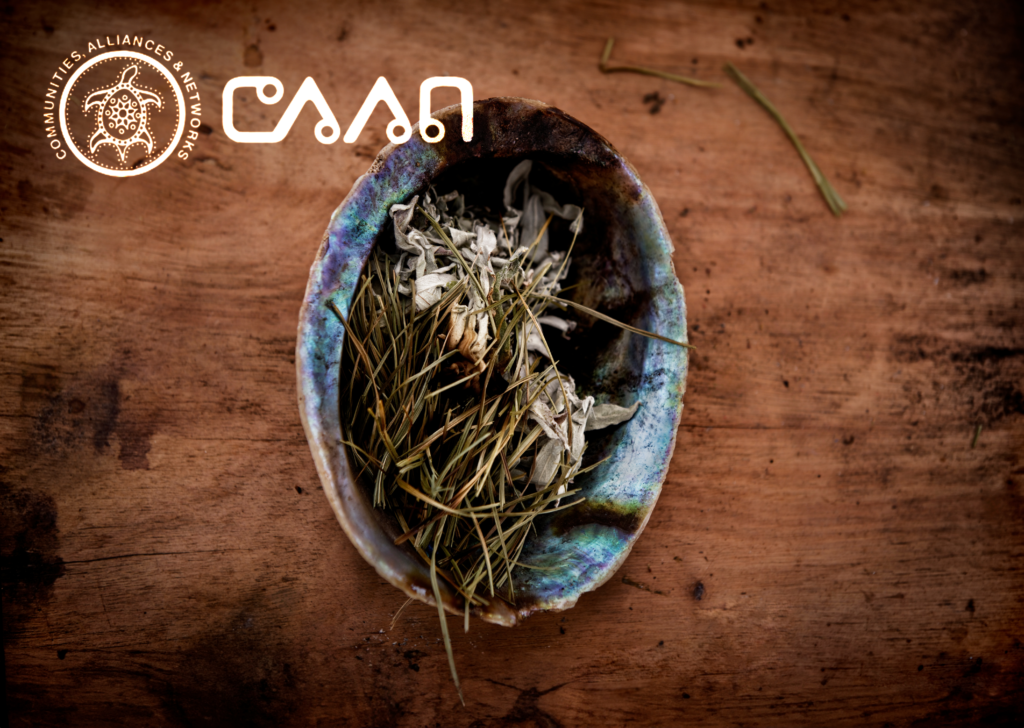About CAAN
CAAN has over 2 decades of history as an incorporated non-profit organization whose mandate has evolved from a primary HIV and AIDS focus to include STBBI, Hepatitis C, Tuberculosis, Harm Reduction, Mental Health, and Aging.



CAAN Mission
CAAN provides a National forum for Indigenous Peoples to wholistically address HIV and AIDS, HCV, STBBIs, TB, Mental Health, aging and related co-morbidity issues; promotes a Social Determinants of Health Framework through advocacy; and provides accurate and up to date resources on these issues in a culturally relevant manner for Indigenous Peoples wherever they reside.
CAAN Philosophy
The philosophy of this agency is that all Indigenous people deserve the right to protect ourselves against infectious disease. Education and prevention is focused on empowerment as Indigenous people are encouraged to learn about the risks of HIV and AIDS and protect themselves accordingly. To provide Indigenous people with accurate and up-to-date information about the nature of the disease, the risks of contracting it, and the issues of care/treatment and support for those infected is the challenge that CAAN employees and directors face each day of their involvement with the agency.
Goals and Objectives Of CAAN
The goals and objectives of the agency are:
- To provide accurate and up-to-date information about the prevalence of HIV in the Indigenous community and the various modes of transmission.
- To offer leaders, advocates and individuals in the AIDS movement a chance to share their issues on a national level by building skills, education/awareness campaigns, and acting in support of harm reduction techniques.
- To facilitate the creation and development of regional Indigenous AIDS service agencies through leadership, advocacy and support.
- To design materials which are Indigenous specific for education and awareness at a national level, and to lessen resource costs of underfunded, regional agencies by distributing and making available these materials wherever possible.
- To advocate on behalf of Indigenous people living with HIV and AIDS (APHA’s) by giving them forums in which to share their issues and to facilitate the development of healing and wholeness strategies among the infected Indigenous population.
- To build partnerships with Indigenous and Non-Indigenous agencies which address the issues of Indigenous people across jurisdictions, thereby improving the conditions in which Indigenous people in Canada live through a continuous and focused effort.
HISTORY OF CAAN
A panel of Indigenous people living with HIV spoke at the Health Canada National Conference in 1991 and laid the seeds for the creation of the Communities, Alliances & Networks (CAAN).
1990's
When the early indicators that a never-before-seen virus was affecting the gay male population in cities like San Francisco and New York, Indigenous gay men in Montreal, Toronto, and Vancouver were also being exposed to HIV (human immunodeficiency virus). The Greater Vancouver Native Cultural Society (Canada’s first Indigenous LGBTQ+ organization founded in 1977) experienced the brunt of infections and resulting AIDS cases among their membership. In 1991, Health Canada addressed the issue of Indigenous people and HIV and AIDS by hosting a national conference in Vancouver, BC.
A panel of Indigenous people living with HIV spoke at the conference and laid the seeds for the creation of the Communities, Alliances & Networks (CAAN). By the mid-90s, there were Indigenous AIDS service organizations (ASOs) like All Nations Hope AIDS Network (SK); Healing Our Spirit Society (BC); Feather of Hope society (AB); Manitoba Aboriginal AIDS Task Force (MB); Healing Our Nations (NS), and allied agencies like the National Indian and Inuit Community Health Representatives Organization (NIICHRO) and the Canadian AIDS Society (CAS).
In 1994, the Indigenous ASOs partnered with CAS to undertake governance development and CAAN was eventually incorporated as a national, non-profit ASO in 1997.
2000's
CAAN opened an office in downtown Ottawa and functioned there until 2010 when the national office was moved to Vancouver, BC. A national skills-building component was added to their annual general meeting as well as a full-day meeting of the Indigenous people living with HIV and AIDS (IPHA) caucus. CAAN was also a key member of the Public Health Agency of Canada’s National Aboriginal Council on HIV/AIDS (NACHA) from 2000-2018 and helped establish the International Indigenous Working Group on HIV/AIDS (IIWGHA) in 2006.
CAAN began building its capacity to do community-based research (CBR) in the early 2000s by choosing to work with academic allies who were willing to include training components into the projects we partnered on. In 2005, we officially established our Research Unit, but it wasn’t until 2012 that CAAN was deemed an institution eligible to hold CIHR funds. In 2012, CAAN also saw the Aboriginal HIV/AIDS Community-Based Research Collaborative Centre (AHA Centre) funded. The AHA Centre provides in-person and virtual supports to CBR efforts in First Nations, Inuit and Métis communities across the land.
In July of 2020, CAAN moved its national office to the Treaty 4 Traditional Territory in Saskatchewan—the original lands of the Cree, Ojibwe (OJIB-WĒ), Saulteaux (SO-TO), Dakota, Nakota, Lakota, and the homeland of the Métis Nation. This move continues to ground the work of CAAN in a land-based, cultural context that supports Indigenous healing, cultural safety, and autonomy.


